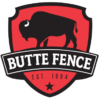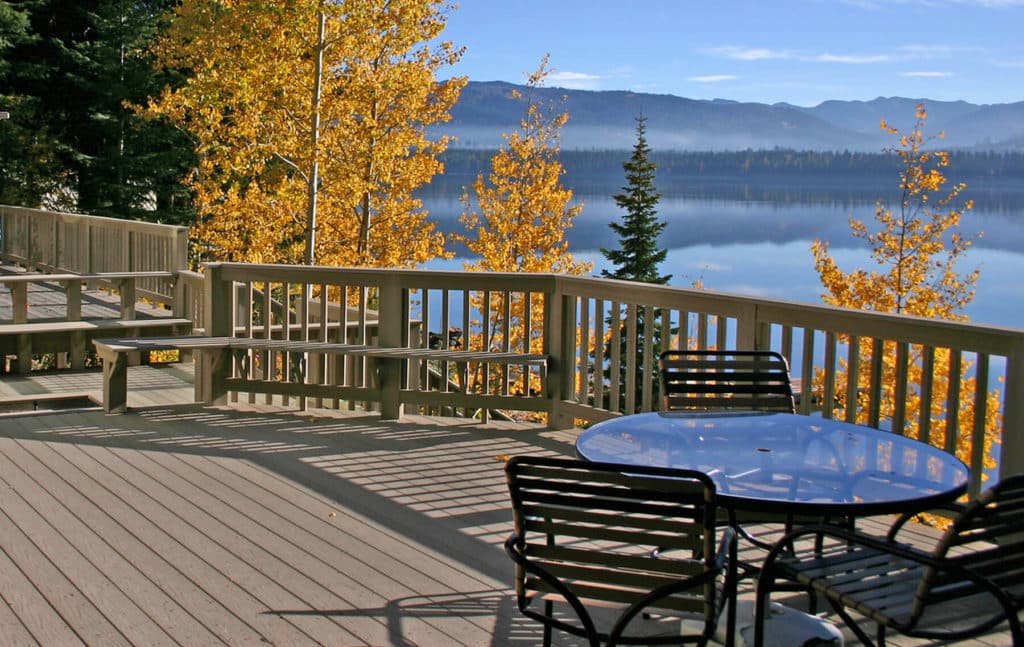There are few architectural features as American as the porch railing. It’s like apple pie, baseball, and the white picket fence–a classic shorthand for Americana toward which American attitudes have ebbed and flowed over time as the concept of the American dream evolved.
Of course, as an average homeowner, you’re likely not thinking about the American dream. You want a beautiful, functional feature that will serve your home well for years to come.
A metal porch railing is the perfect feature for families like yours who want to bring together style and function. It provides a bit of privacy without compromising on personality, offering support when you need it and a great look any time of the week.
If you’re thinking of getting a metal porch railing for your home, here’s what you need to know before having a railing installed.
A Brief History of Porch Railings
Porch railings are now considered a classic feature of American architecture, but their roots run much deeper than the United States. That’s because porches are actually a very old architectural feature, though they weren’t always known as porches.
The precursor to the modern porch is the portico, also known as a veranda or a piazza, one of several words used to describe a type of covered walk or spaces supported by columns or piers, either attached to a building or integrated into the building’s architecture.
The portico originated in ancient Greece, and in those days it had a few critical functions. It was a formal entryway that defined the entrance to a home, but it also created the appearance of authority. The British brought it to America for the same reason wealthy ancient Greeks opted for them: having one was a status symbol.
Yet the porch is more than just a pretty signifier. It has persisted for so long as an architectural feature because it is also a functional space that tells a lengthy story about the culture that built it.
The Porch as an Architectural Feature
As an architectural feature, the porch (and the portico before it) speaks to the interrelatedness of architecture and gardens. We have porches today not just because American settlers viewed them as a status symbol, but because of the romantic fascination with the landscape in the 18th and 19th centuries.
In those days, the porch wasn’t simply a framing feature for the entryway, which is how the Greeks perceived it as a symbol of authority. For the homeowner looking at the porch from inside the home, the porch creates a framing view for the garden and landscape beyond, as well as a comfortable, shaded place to enjoy the scenery.
Because of this romantic interest in nature, porches were a wildly popular architectural feature of the 18th and 19th centuries for those who could afford them. Porches of this era greeted visitors as a major expression of the building’s style.
In that period, porches can be split into three broad stylistic groups: Classical, Victorian, and Arts & Crafts.
Classical
Classical architecture, which for our purposes broadly includes Greek Revival, Neoclassical, and Colonial Revival styles, is a style of architecture which is more or less deliberately drawn from architectural principles of Greek and Roman architecture in antiquity. The most obvious feature of this style is the prominent column and pediment support.
Because of this, Classical porches are always supported by columns. Early Classical porches are deliberately crafted using dimensions typical of the academically correct Greco-Roman style.
If you know your Greco-Roman architecture, though, you’ll notice one thing these structures did not have: a railing. That feature wasn’t added until the 1880s, when it became a practical necessity and the style was adapted to allow for a railing with classical echoes, typically a wide rail with turned, classically-molded balusters.
Victorian
The Victorian era offers us some of the best-known porch styles. An architectural style at its height from 1850 to 1910, the style includes Italianate, Stick, and Queen Anne styles.
The Victorians had a highly romantic interest in the landscape, and their porches reflect this. Porches and railings of this era also reflect Victorian exuberance, extravagance, and creativity.
A closer examination of porch railings from that period reflects these Victorian sensibilities. Rather than the comparatively staid Greco-Roman moldings, railings and banisters took on fanciful whorls, incisions, and swirls. If you know design, everything is on display here from Chinese flares to Swiss chalet architecture.
Arts & Crafts
Last but not least is the Arts & Crafts style, which had its height from 1900 to 1925 and included Bungalows, Dutch Colonial, and Foursquare style. The heyday of this style was relatively short and the porches themselves relatively simple to construct.
As the name implies, the Arts & Crafts movement was part of an American and British push to revive handicrafts. It was a direct response to Victorian excess and Industrial machine-made features. Instead, homeowners wanted a style that was a return to pre-Industrial society, when homes and furnishings were handmade.
For this reason, porches (and porch railings) of the time were simpler, made of natural materials with square or round columns and stone supports with a wide, heavy railing in between.
The Cultural Significance of the American Front Porch
Much of the history of the front porch and porch railings has to do with history gathered from elsewhere. Yet the history of American homes (and porches) is also a history of America.
Porches came about as a meeting place between the home inside and nature outside. For a country that was predominantly agrarian for much of our history, the porch thus carries special significance. On the other hand, the agrarian ideal under “manifest destiny” is also about controlling nature as settlements swept further and further westward.
In many ways, the porch compromises between the two: the idea of nature and the idea of controlling it.
It is also easier to see how the porch became an American symbol (and the connotations attached to it) if we look at where porches are a traditional feature: the South. In the pre-Civil War era, the South was almost exclusively agrarian, its economy almost exclusively dependent on plantations.
After the Civil War, however, front porches remained a deeply southern feature. This is also to the credit of southern social norms in tandem with climate–the warm climate, slower pace of life, and low population density meant everyone was in everyone’s business.
This is where the porch becomes an important feature. In much the same way it serves as a frame for the entryway (or nature for the family looking out), the porch is also a meeting place between the outside and the inside, a space that is not yet indoors and not fully outdoors. It is precisely the kind of middle-ground meeting place ideal for casual social interaction.
The Character of the Classic Front Porch
Once we know this about the porch, the common features of the classic front porch make a lot more sense.
In writing about American porches, writer Michael Dolan suggested the best elements of a classic front porch include:
- A fan
- A welcome mat
- Space for a dog
- A sitting height rail
- Real plants
- A swing
- Little or no lighting
- Bicycles close by
Notice what these features have in common?
All of them are geared to create a casual yet inviting setting which is not quite an invitation into the home but nonetheless an expression of the home’s character. They are also an expression of homeliness (real plants, space for the dog) and domesticity (bicycles, a welcome mat), combined with socializing (a swing and a sitting height rail).
The sitting height rail points to the casual social nature of the porch. What realtors today call curb appeal was once a status symbol. In other words, what you put on your porch says something about you. Your railing, by this estimation, should be sitting height to allow you to talk to passersby while seated, but it should also be of a pleasing, decorative nature.
Shifting Sensibilities Toward the Front Porch
The front porch has seen a shift in recent years, though it varies depending on where you live.
If you live in New York City, for instance, it’s quite common to pass years (if not a lifetime) in your apartment building without knowing the other people who live there. There’s no such thing as a porch (or any similar middle-ground social space) because there’s no space for one and too many people to make such a thing practical.
In the South, on the other hand, where people tend to be more spread out, porching is a time-honored tradition. Your porch is the place where you meet many of your friends and neighbors, and not sitting on the porch would feel downright odd and antisocial.
For places like Idaho, we find ourselves in an interesting time.
The Pacific Northwest doesn’t get cold the same way the Midwest does, but it doesn’t get hot the way it does in the South either. We have all four seasons, which much of the South does not. That inherently means we don’t spend every month of the year outdoors.
It also makes it easier to see shifting attitudes toward socializing with neighbors. Back in the day, homes once prioritized front yard space and porches because socializing with your neighbors was common and expected. Today, many new builds prioritize backyard features instead.
Why? Because shifting social norms value privacy over social engagement. The family sticks together. As such, porches are shrinking and back yards (and decks) are getting more credit.
However, we’ve come to appreciate the front porch with new vigor thanks to an unexpected alteration in our social patterns: the coronavirus pandemic. Nowadays, porches are the place you drop off a meal to your loved ones. They’re the place you sit to have a socially distanced conversation across the front yard.
Plus, in a time when true socializing is so scarce and spending time alone is so much more common, we’ve come to appreciate the value of spending time together, whatever that means in our unique case. And when it comes to socializing, the front porch always wins out over the back yard.
Why Get a Metal Porch Railing?
This brings us, at last, to the question of your metal porch railing.
As a homeowner, now is the perfect time to invest in a metal porch railing. It’s a nod to the future you want to have in your home–one where you engage with neighbors and loved ones rather than staying away. And on a deeper level, a metal porch railing is a practical and aesthetically pleasing choice that will stand by you for years to come.
Here’s why it’s time to invest in a metal porch railing for your home.
Metal is Highly Durable
While the traditional porch railing was made of wood, a metal porch railing is an upgrade that’s more than worth it for your home.
Wood looks good when you install it at first, but unfortunately, it’s also more vulnerable to the elements than some other materials. And in a place like Idaho, where extreme weather is a fact of life, your porch needs something that can hold up to the elements.
Metal porch railings are made of metals designed to withstand your toughest weather, year after year. It’s known to hold its own against even the worst weather, allowing you to rest easy knowing your porch is protected.
The Right Metal Can Also Be Lightweight
Depending on the metal you choose, your metal porch railing can also be lightweight.
That might not sound like an advantage at first, but think about it. Part of the cost of your metal porch railing comes from installation, which means labor costs. A lightweight metal is more convenient to work with and easy to install, which means lower labor costs and cost-effective installation.
But to be clear, a lightweight railing doesn’t mean it can’t stand up to the elements. Many lightweight metals are actually quite strong, and all our metal porch railings are designed to stand strong.
Maintenance is Crazy Easy
While a wood porch railing is more traditional, there is one significant downside to using the material: maintenance. Unfortunately, wood needs a lot of maintenance. It can retain moisture, attract pests, and wears down with time.
A metal porch railing, on the other hand, is made for low-maintenance homeowners. Most metal railings are pre-treated to help them stand up to the elements, which means all you need to do is keep them clean.
Aesthetically Appealing
When you’re adding any feature to your home, you’re always thinking about curb appeal. As investments go, a metal porch railing is a great choice to bolster your curb appeal and strengthen your home’s resale value (and keep your home beautiful while you live in it, of course!)
We offer a number of decorative options for your metal railing to ensure you get a style that works with your home. We work with you to come up with stylish ideas to suit you, so whether you love our standard options or you want a railing that’s completely unique, we can work with you to install a railing you’ll love.
Great Value
Our customer base is ordinary homeowners just like you, so we know that cost is a concern for you. When you come to us, you’re looking for a railing that will make the most of your money.
The good news is that metal railings can provide the value you’re looking for.
We work hard to bring together quality and value, bringing you the best materials at a price that works for your budget and still looks good doing it. Plus, our metal porch railings are designed to last, which means you’ll get more value out of your railing for years to come.
Railings as a Safety Feature
We’ve been going the extra yard for families like yours for decades, which means we understand the importance of family. That also means we understand the importance of key safety features to support the needs of the entire family.
Metal porch railings are a fantastic feature to offer just that.
A Safe Grip
For one thing, a metal porch railing is an excellent choice to offer a safe grip for loved ones who need a little extra support.
When a loved one has limited mobility or balance issues, a railing can make all the difference between a nasty fall and a minor slip. This makes railings especially important for young kids, the elderly, and individuals with disabilities.
Even if someone only grazes a railing in case they need a bit of extra support, having a railing there is a way to give everyone a bit more peace of mind. It’s just one more way to make your home accessible for your loved ones, which is critical in spending more quality time together.
Protection During Inclement Weather
Whether you’re able-bodied or need extra support, a metal porch railing is an excellent support system anytime you face inclement weather. As all Idaho homeowners know, bad weather happens more often than we’d like.
In any form of inclement weather, whether it’s rain, snow, ice, sleet, or hail, porches can turn slippery and slick in the blink of an eye. Railings provide that extra support needed to make sure you don’t slip. And for individuals who already need support in good weather, a railing can make all the difference between a near-miss and a serious injury.
Why take that chance with your loved ones if you could provide the extra support they need?
Peace of Mind
But most of all, a metal porch railing offers you some invaluable peace of mind.
There’s no way to predict what conditions you’ll face in the future. Nor can you predict what support your visiting loved ones might need in years to come. But a metal porch railing allows you to meet those challenges with grace, steady in the knowledge that you’re prepared to handle what comes your way.
And when it comes to your loved ones, that peace of mind is worth every last cent.
Considerations Before Installing Your Metal Porch Railing
Does a metal porch railing sound like the right fit for you? If so, here are a few things to think about before you invest in yours.
First, think about the style of your home–what style you have now and what style you’d like to have in the future. It doesn’t make sense to invest in a modern railing if you live in a traditional-style home, so think about what style and features you need to add aesthetic value.
Second, think about your budget. While your budget should not be the sole deciding factor between one contractor and the next, it’s certainly an important one. Take a good look at your budget and think about what you’re able and willing to spend on the project.
Finally, think about what you want your railing to achieve. Is it intended as a decorative feature? Do you need it to be more durable to serve as a safety feature? If you know what you want your railing to do, it will be easier to find the perfect railing to meet your needs.
We Go That Extra Yard
Ready to invest in a metal porch railing? It’s a beautiful feature to support your family and add value to your home.
Our job is to make that possible. We’ve served families like you since 1994, using hard work, integrity, and strong values to become one of the largest vinyl fence companies in the West. We achieved all that through our commitment to serving ordinary families like you and providing you with the features that make your house a home.
If you’re ready to invest in a metal porch railing, get in touch today to let us know about your project.


